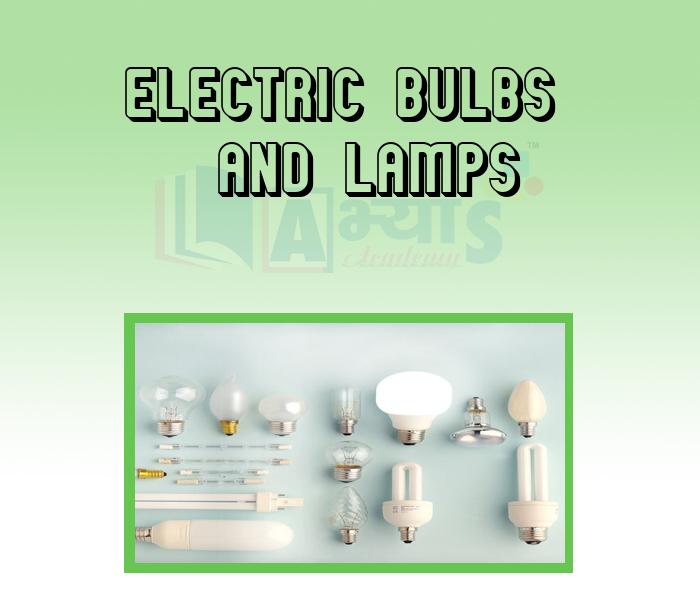Electric Bulbs And Lamps










Electric Bulbs And Lamps
Lighting: Electric light is produced by passing an electric current through a substance that either glows when current flows through it or causes another substance to glow. The most important types of electric light sources are the incandescent filament lamp and the electric discharge lamp.
Incandescent Filament Lamps: Light is produced by a thin tungsten wire, or filament, heated to a very high temperature by an electric current passing through it. The heated filament glows with an intense while light but does not burn up because it is enclosed in a sealed glass bulb from which the air has been removed.
Electric Discharge Lamps: In this type of lamp, electric current passes through a gas or vapour, rather than through a filament. The gas or vapour is usually sealed in a bulb or tube that has an electrode at each end. Current applied to the electrodes causes some of the gas or vapour atoms to become ionised (electrically charged). When enough atoms are ionised, the gas becomes an electric conductor. Current flows from one electrode to the other through the gas, causing it to produce radiation. In most lamps, this radiation is a visible light; however, the fluorescent lamp consists of invisible ultraviolet rays.
Students / Parents Reviews [10]
One of the best institutes to develope a child interest in studies.Provides SST and English knowledge also unlike other institutes. Teachers are co operative and friendly online tests andPPT develope practical knowledge also.

Aman Kumar Shrivastava
10thI have spent a wonderful time in Abhyas academy. It has made my reasoning more apt, English more stronger and Maths an interesting subject for me. It has given me a habbit of self studying

Yatharthi Sharma
10thAbhyas Methodology is very good. It is based on according to student and each child manages accordingly to its properly. Methodology has improved the abilities of students to shine them in future.

Manish Kumar
10thAbout Abhyas metholodology the teachers are very nice and hardworking toward students.The Centre Head Mrs Anu Sethi is also a brilliant teacher.Abhyas has taught me how to overcome problems and has always taken my doubts and suppoeted me.

Shreya Shrivastava
8thBeing a parent, I saw my daughter improvement in her studies by seeing a good result in all day to day compititive exam TMO, NSO, IEO etc and as well as studies. I have got a fruitful result from my daughter.

Prisha Gupta
8thMy experience with Abhyas is very good. I have learnt many things here like vedic maths and reasoning also. Teachers here first take our doubts and then there are assignments to verify our weak points.

Shivam Rana
7thMy experience was very good with Abhyas academy. I am studying here from 6th class and I am satisfied by its results in my life. I improved a lot here ahead of school syllabus.

Ayan Ghosh
8thIt has a great methodology. Students here can get analysis to their test quickly.We can learn easily through PPTs and the testing methods are good. We know that where we have to practice

Barkha Arora
10thMy experience with Abhyas academy is very good. I did not think that my every subject coming here will be so strong. The main thing is that the online tests had made me learn here more things.

Hiya Gupta
8thAbhyas is a complete education Institute. Here extreme care is taken by teacher with the help of regular exam. Extra classes also conducted by the institute, if the student is weak.
